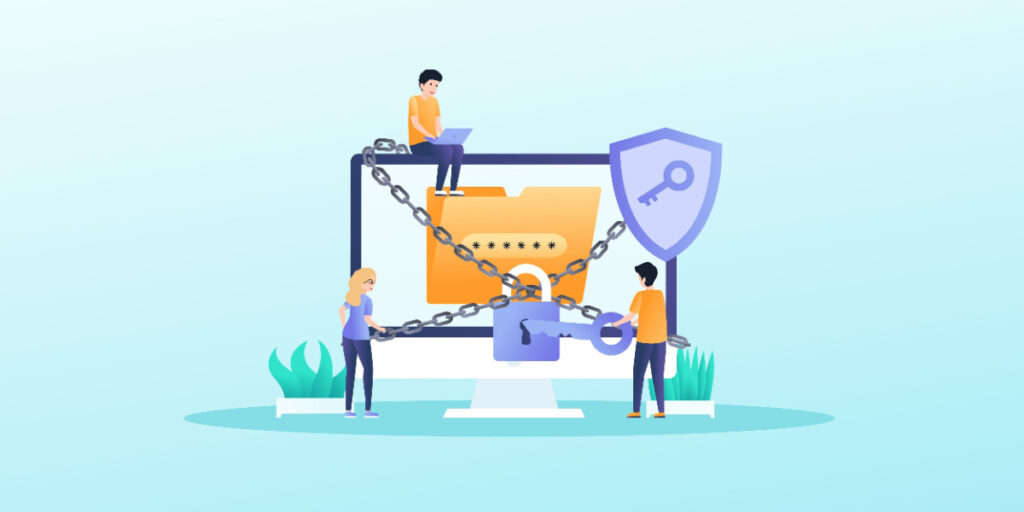User Management Systems (UMS) are critical to many IT structures as they provide a centralized way to manage user access to various resources within an organization. In essence, a User Management Systems is responsible for creating, deleting, and modifying user accounts, ensuring the right people have access to the right resources at the right time.
Issues with user accounts are one of the top causes of service desk requests. In addition, these systems are critical for security and compliance in larger organizations. Without User Management Systems, managing user access rights across multiple departments or business units can be complex, time-consuming, and error-prone.
This article covers the key elements of User Management Systems, their importance in a modern IT environment, and their significant role in IT service management (ITSM).
This article covers the key elements of User Management Systems, their importance in a modern IT environment, and their significant role in #ITSM. Click To TweetKey Components of User Management Systems
Let’s review the key elements of User Management Systems:
- User Directories – User directories serve as the primary source of user account information. They store and organize user data such as usernames, passwords, roles, and permissions. In essence, user directories act as a database for all user-related information. Usually, user directories are hierarchical and enable quick search and retrieval of user information. They also support single sign-on (SSO) operations, allowing users access to multiple applications using a single set of credentials. This is convenient for users and strengthens security by reducing the passwords a user needs to remember.
- Identity Providers – Identity providers (IdPs) are responsible for authenticating users and providing them with digital identities. An IdP verifies the user’s credentials against the user directory and, upon successful verification, issues a token the user can use to access other applications or resources within the network. By providing a centralized authentication system, they reduce the risk of unauthorized access and the potential for security breaches.
- User Management Interfaces – User management interfaces provide IT administrators with a unified dashboard to manage user accounts, roles, permissions, and other related tasks. With these interfaces, administrators can easily add, modify, or delete user accounts, assign or revoke roles and permissions, and monitor user activities, making user management more efficient. They also support policy enforcement, ensuring all user management activities adhere to the organization’s IT policies and standards.
This blog post offers more background on the user management process.
The ITSM Role and Impact of User Management Systems
Now that we understand what User Management Systems encompass let’s see how they impact the day-to-day workflows of ITSM professionals.
How do user management systems impact the day-to-day workflows of #ITSM professionals? This article explains. #servicedesk Click To Tweet- Automated Account Creation and Role Assignments – One of the key roles of User Management Systems in ITSM is the automation of account creation and role assignments. With User Management Systems, adding new users and assigning them roles and permissions is simplified. For example, when a new employee joins the organization, the IT team doesn’t need to manually create an account for them. The User Management System can automatically generate a user account based on the employee’s information, assign them the appropriate roles and permissions, and even email them their login credentials. This automation eliminates the tedious and time-consuming tasks associated with manual account creation and role assignment. It also reduces the risk of human errors, which can lead to security vulnerabilities.
- Enhancing Incident and Service Request Management – IT teams can respond to incidents and service requests more efficiently and effectively with precise and up-to-date user data. For instance, when a user submits a service request or reports an incident, the IT team can quickly look up their information in the User Management System. They can see the user’s roles, permissions, and access history, which can provide valuable insights into the issue at hand. In addition, a User Management System can help resolve incidents involving specific user accounts. For example, if there’s a suspected insider threat in the organization, a User Management System makes it easy to see all the activities performed by a certain user to identify if they are attempting unauthorized access.
- Facilitating Change Management by Tracking User Roles and Permissions –With a User Management System, IT teams can track changes in user roles and permissions, ensuring that the impact of these changes on the IT system is properly managed. When a user’s role changes or their permissions are updated, the User Management System records these changes. The IT team can then review these records to assess the potential impact of the change and plan accordingly. This kind of tracking can also help detect unauthorized changes, providing an additional layer of security.
- Secure Processes for User Offboarding – User offboarding is a critical ITSM process that often poses security risks. When someone leaves the organization, their access to the IT system needs to be revoked to prevent any potential misuse. With a User Management System, IT teams can quickly and automatically deactivate user accounts, revoke their roles and permissions, and even wipe their data from company devices. This ensures that a departing employee can no longer access company resources, protecting the organization from potential security threats.
- Improving Service Catalogs with User-Specific Service Offerings – User Management Systems can support service catalog management in ITSM by enabling user-specific service offerings. With the detailed user data in a User Management System, IT teams can customize their service offerings based on the user’s role, permissions, and needs. For example, an IT team can offer different software applications to different user groups based on their roles. A marketing team might need access to marketing automation tools. In contrast, a software development team might need access to coding capabilities.
Best Practices for ITSM
- Periodic Reviews of User Access Levels – Regular reviews of user access levels are essential to maintaining security and ensuring compliance within an organization. This process involves auditing and analyzing the access rights of users to confirm they align with their current roles and responsibilities. Periodic reviews help identify discrepancies, such as excessive permissions or outdated access rights, which could pose a security risk.
- Implementing RBAC for Fine-Grained Access Management – Role-Based Access Control (RBAC) is a strategy for managing user permissions that assigns access rights based on organizational roles. Implementing RBAC as part of a User Management System allows for more granular, efficient, and secure access management. It also simplifies the administration of access rights, reduces the risk of errors, and ensures that users have only the access necessary to perform their duties.
- Use a User Management System to Manage Access Across ITSM Tools – By centralizing user access control, IT teams can consistently enforce access policies across all ITSM applications and services. This approach simplifies the process of granting, modifying, and revoking access, enabling IT teams to respond more swiftly to changes in roles or employment status. Additionally, centralizing access management through a User Management System facilitates a unified view of user activities and access patterns, aiding in detecting and preventing security threats.
- Safeguard Personal Information with Data Protection Measures – Incorporating data protection measures into a User Management System is crucial for protecting personal and sensitive information. This involves implementing encryption for data at rest and in transit, ensuring that user information is protected from unauthorized access or breaches. Also, strict authentication and authorization mechanisms help prevent unauthorized access to sensitive data. Regular security assessments and adherence to data protection best practices further enhance an organization’s security posture, ensuring compliance with data protection regulations and maintaining users’ trust by protecting their information.

